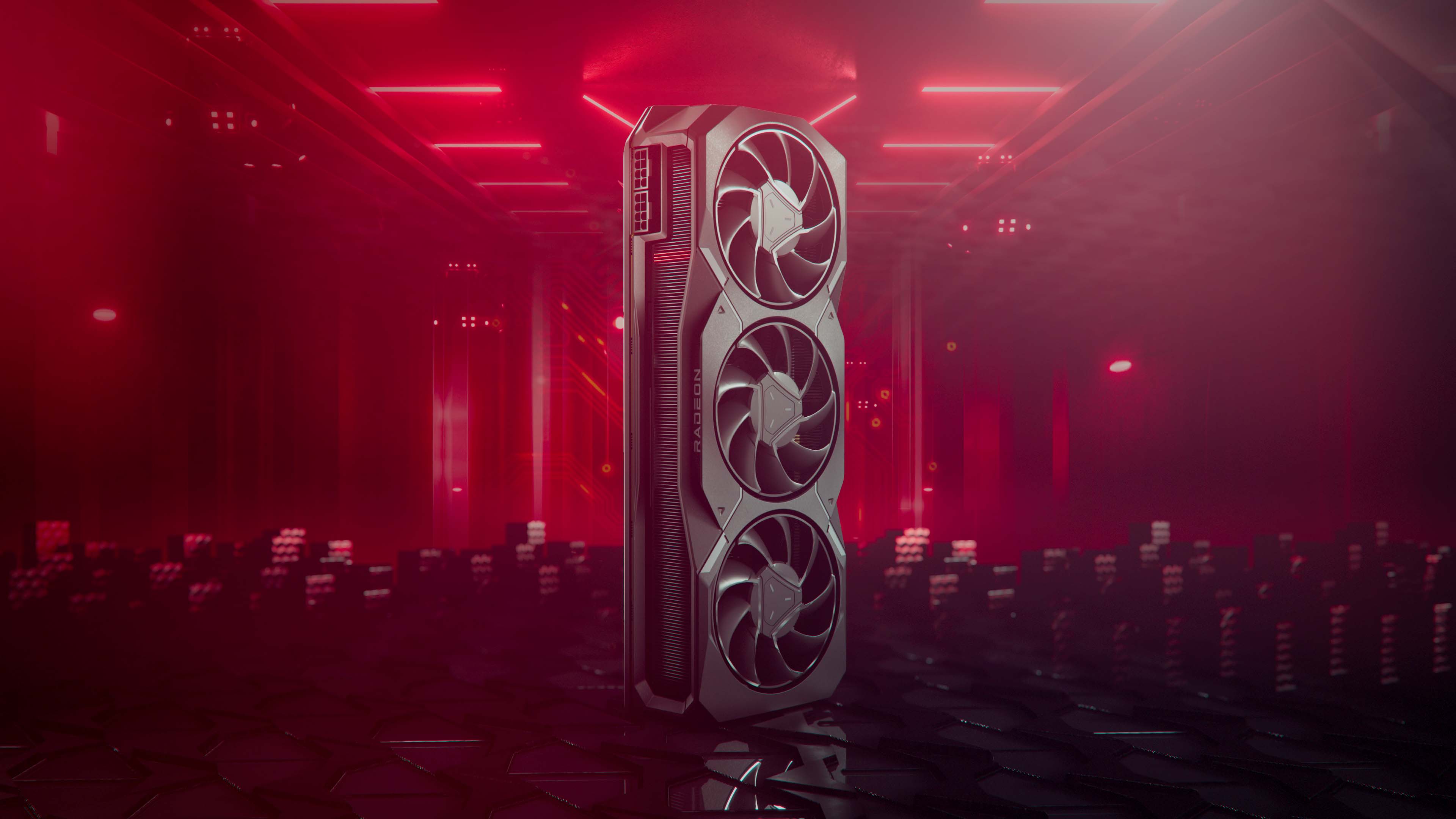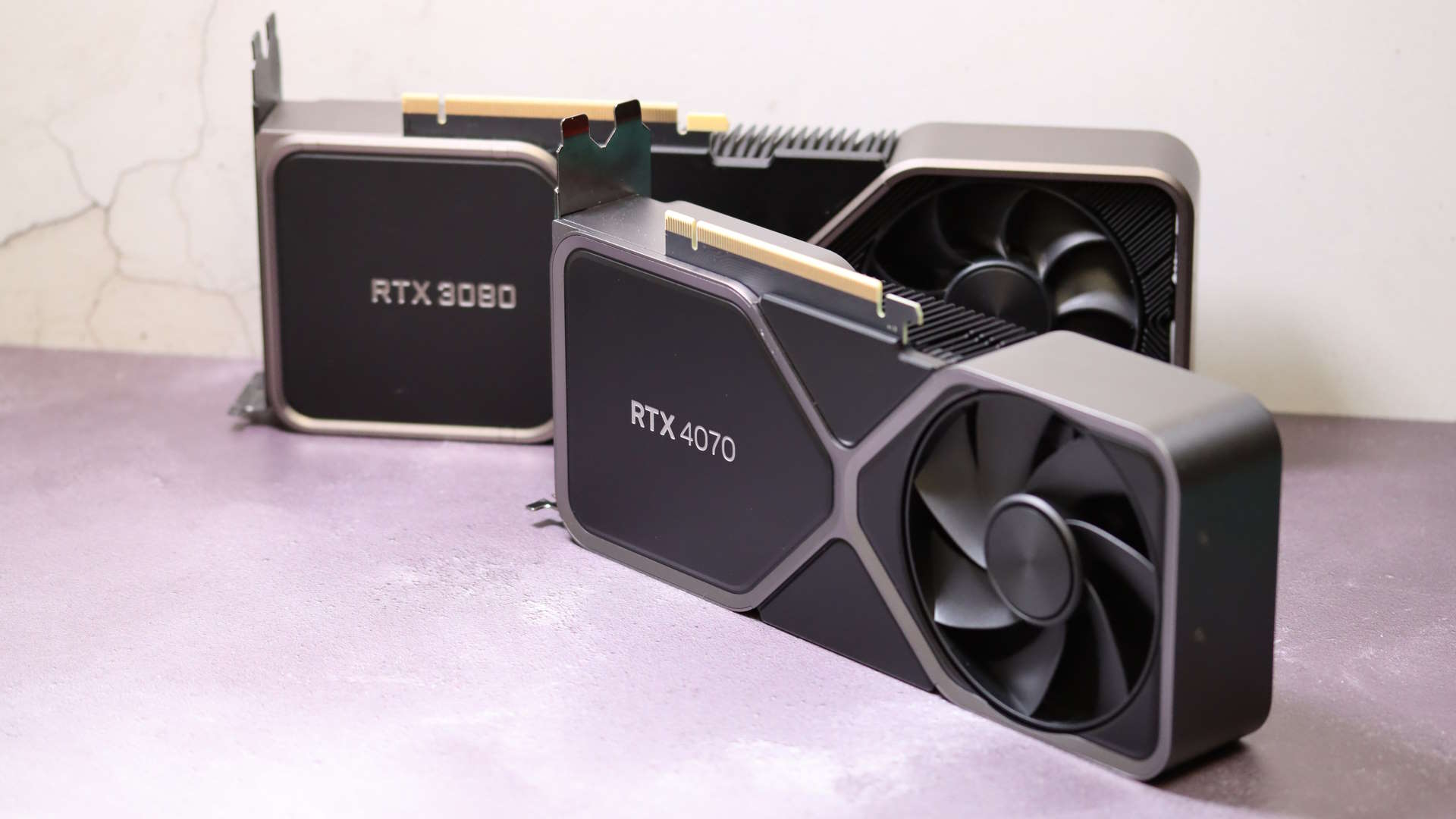Nvidia's RTX 4070 is out but what about AMD's response?
Where are AMD's more affordable RDNA 3-based graphics cards?

Nvidia has rolled out its new RTX 4070 graphics card. Verily, it has proven pretty much what we expected. That is to say it's a great card at a just about tolerable price. But what about AMD? Where are its competing GPUs based on the latest RDNA 3 architecture as seen in the RX 7900 XT and RX 7900 XTX?
As things stand, Nvidia currently has three actual GPUs based on its latest Ada Lovelace architecture. That's the AD102 GPU in the RTX 4090, AD103 in the RTX 4080, and AD104 in the RTX 4070 Ti, as well as the newest-of-all RTX 4070. But what about AMD's latest round of GPUs? That'll be just one RDNA 3 GPU, Navi 31, as seen in both the RX 7900 XT and RX 7900 XTX.
Next up from AMD is expected to be Navi 32 which will form the basis of the RX 7800 XT and RX 7700 XT. Officially, nothing is known about Nav 32. However, there's a reasonable amount of rumour info out there, including a new video from RedGamingTech and TechPowerUp's GPU database.
There's a high level of agreement on the specs and details, which is always reassuring when it comes to the reliability of rumoured specs. So, here goes. By consensus, Navi 32 is looking like it will be another chiplet design similar to Navi. Indeed, the cache and memory controller chiplets will be shared with Navi 31, but Navi 32 will get fewer of them: four instead of six for the 7800 XT.
Navi 32's GCD—the big slab of silicon with all the graphics processing gubbins—is expected to be smaller than the Navi 31's GDC. Where Navi 31 has up to 96 computer units and 6,144 double-pumped shaders, Navi 32 is pencilled in at 60 compute units and 3,840 double-pumped shaders.

However, Navi 32 is expected to clock quite a bit higher, peaking at 2.8GHz against Navi 31's 2.5GHz. And while Navi 32 is estimated at 43 TFLOPS of raw compute performance, Navi 31 cranks out 61 TFLOPS in the 7900 XTX and 51 TFLOPS in the 7900 XT.
For context, the new Nvidia RTX 4070 clocks in at 29 TFLOPS and the RTX 4070 Ti at 40 TFLOPS. On paper, then, Navi 32 looks pretty competitive, at least in terms of pure raster performance. If these specs are correct, it will actually be pretty close to Navi 31 for performance, which could explain why AMD is being slow to roll it out.
Keep up to date with the most important stories and the best deals, as picked by the PC Gamer team.
There's a received wisdom that AMD missed its clockspeed targets with Navi 31 but will hit them with Navi 32, resulting in a relatively small real-world performance gap between the two GPUs. If so, Navi 32's arrival could make Navi 31 somewhat redundant and that, in turn, might encourage AMD to push Navi 32 out in terms of launch date in order to give Navi 31 a little breathing space.

Best CPU for gaming: The top chips from Intel and AMD
Best gaming motherboard: The right boards
Best graphics card: Your perfect pixel-pusher awaits
Best SSD for gaming: Get into the game ahead of the rest
Navi 31 is certainly less competitive when it comes to ray-tracing performance, anyway. Nvidia's frame generation tech also complicates any comparison, though AMD is working on an answer to that which may be ready in time for Navi 32's arrival.
Speaking of arrivals, when can we expect any Navi 32-based GPUs including the RX 7800 XT to arrive? Again, there's no official word. The current rumour mill suggests the earliest likely announcement will be at Computex, which runs from May 30 to June 2 with retail availability in July.
Some sources think it could come later than that, with an announcement no earlier than July and actual availability some time after that. As GPUs near launch date, the rumours and leaks tend to accelerate. As things stand right now, then, Navi 32 doesn't feel imminent.
But the launch of the RTX 4070 will make it much harder for AMD to keep flogging last-gen cards like the RX 6950 XT and 6800 XT, even with recent price cuts. So, here's hoping Navi 32 cards are out soon and that they're as good as these rumours suggest they might be.

Jeremy has been writing about technology and PCs since the 90nm Netburst era (Google it!) and enjoys nothing more than a serious dissertation on the finer points of monitor input lag and overshoot followed by a forensic examination of advanced lithography. Or maybe he just likes machines that go “ping!” He also has a thing for tennis and cars.

